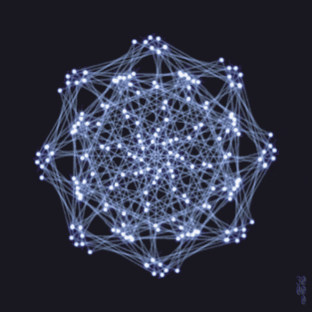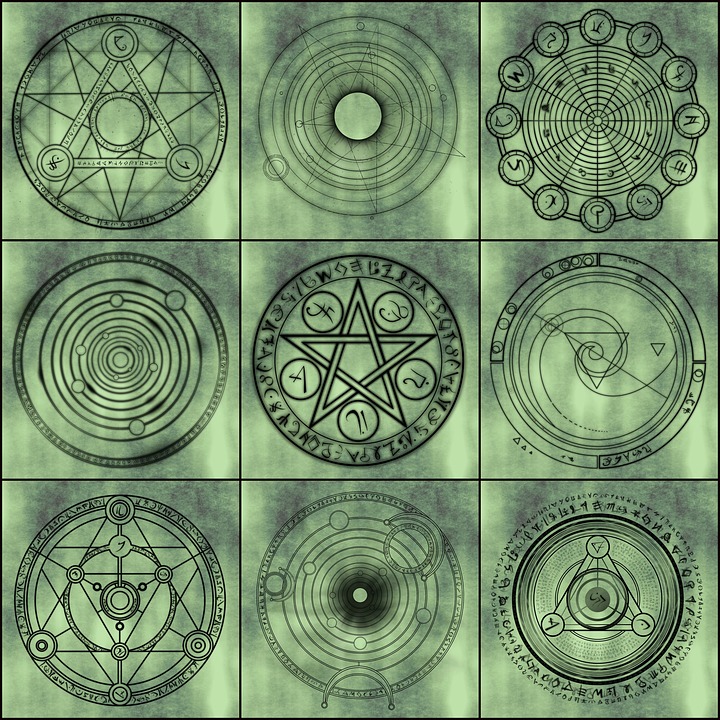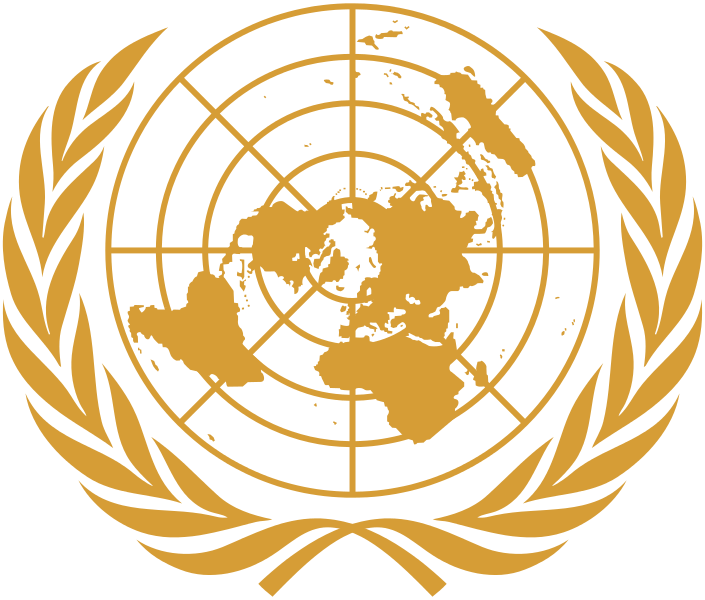Philanthropy as a Territory of Transition
In the US alone, about $35 trillion to $70 trillion in wealth will transfer from one generation to another in the next twenty years. Most of this wealth will move between family members in the wealthiest 0.1%. Pundits, economists, financial advisors and others are calling this the “largest generation wealth transfer in history.” Many are talking about the potential for social change driven by a shift in philanthropic priorities. However, most of these foresights do not bring in either a structural lens (i.e. how the dominant operating system is structured to perpetuate its own existence) or a historical lens (i.e. how this wealth was created in the first place, which then informs its directionality) hence not accounting for the critical work that will be required to truly make wealth a territory of transition. Nor is there any guarantee that a transfer of wealth will mean a proportionate increase in philanthropic spending, or that philanthropy can even address the magnitude of problems that we are facing as a civilization.
Let’s start with the structure. Capitalism is a system that is organized around extracting and accumulating surplus value, and then reinvesting that capital for increased expansion through ever-more exploitation of human labor and the natural world. Of course, capitalism is not a static system. It is constantly morphing and mutating. In the 1980’s, the dominant form of capitalism became neoliberalism – an accelerated, globalized incarnation that purposefully deregulated the global economy, cheapened labor and expanded corporate control to keep the engine of growth going.
 Since 1980, about 46% of all economic growth has gone to the richest 5% of humanity. Only 5% of this new wealth over the same period has ended up in the hands of the world’s majority – 60% of humanity. Therefore, by definition, growth actively creates economic inequality. Economic growth requires that an ever-shrinking minority of people extract more from the natural world and from the bodies of an ever-expanding mass of people.
Since 1980, about 46% of all economic growth has gone to the richest 5% of humanity. Only 5% of this new wealth over the same period has ended up in the hands of the world’s majority – 60% of humanity. Therefore, by definition, growth actively creates economic inequality. Economic growth requires that an ever-shrinking minority of people extract more from the natural world and from the bodies of an ever-expanding mass of people.
Also, every dollar of wealth created heats up our planet, as the global system is built upon an extractives-based fossil fuel economy. More growth requires more energy, which requires more demand for fossil fuels and makes it even more difficult to decarbonise energy systems. To the extent that capitalism requires growth, it generates and exacerbates climate change and ecological breakdown. It inevitably does so to the detriment of future generations of human and more-than-human beings.
Despite the stark material reality of this meta-crisis (interlocking and cascading crises resulting from the logic of capital), economists, bankers and the financial orthodoxy continually reiterate that within the current debt/growth system, we must grow the global economy at 3% a year to avoid stagnation and/or recession, and eventually collapse. This is because growth has to exceed interest rates in order for the debt-based money (which is loaned into existence) to return both principal and interest. Three per cent may not sound like much, but it requires a doubling of the global economy every 23 years. We have already crossed six of the nine planetary boundaries and are in the midst of the Sixth Great Extinction: a doubling of the global economy is now a material impossibility.
We have already crossed six of the nine planetary boundaries and are in the midst of the Sixth Great Extinction: a doubling of the global economy is now a material impossibility.
As the current structure hits the limits of the physical world, there is an increasing enthusiasm for geo-engineering, block-chain, artificial intelligence and other techno-utopian savior ideologies that attempt to bypass the consequences of our historical actions. As Wendell Berry reminds us, “We are not likely to be granted another world to plunder in compensation for our pillage of this one. Nor are we likely to believe much longer in our ability to outsmart, by means of science and technology, our economic stupidity.”
Within the halls of “solutionism” there is rarely an acknowledgement of the drivers of historical wealth creation, including colonialism, enslavement, genocide, white supremacy, patriarchy, imperialism, perpetual war, pillage and “accumulation by dispossession”. Rather, neoliberalism tells us that we must pull ourselves up by the bootstraps much like the descendants of the vanquishers around us, and aspire to find meaning in their same extractive, consumerist ways of living and being.
Here it is important to note that we do not believe that capitalism is some kind of dark-room conspiracy. From the survival of the most basic cell, all the way up to the complexity of an ecosystem, this is how complex adaptive systems behave. They create and emerge from matrices of energy and matter that support their existence. The logic of capital is merely the logic of a particular complex, adaptive system. As Thomas Piketty has shown in such detail, left to its own devices, the system will always reward capital with more capital.
The sole priority of complex, adaptive, evolutionary systems is to survive. Once a network becomes sufficiently complex, it becomes self-organizing and self-preserving. One way the global economic system preserves itself is to draw into positions of influence those people who best serve its purpose. A capitalist system, whose prime directive is the production of capital, will work constantly to refine and improve its ability to do just that.
 All sectors of the neoliberal economy are fractal parts of the whole. They mirror the logic of the larger complex system and are such both extensions and externalities of neoliberalism. This is true from the most obvious sectors such as technology, finance, pharmaceuticals, agriculture, consumer goods as well as the more benign appearing sectors like scientific research, the arts, academia and philanthropy.
All sectors of the neoliberal economy are fractal parts of the whole. They mirror the logic of the larger complex system and are such both extensions and externalities of neoliberalism. This is true from the most obvious sectors such as technology, finance, pharmaceuticals, agriculture, consumer goods as well as the more benign appearing sectors like scientific research, the arts, academia and philanthropy.
Here we will focus on philanthropy because this sector has the potential to play a critical role as a “territory of transition”, rebalancing wealth, knowledge and power while repairing historical injustices. Yet, all too often, philanthropy exacerbates our current exploitative system through undemocratic and unaccountable processes; by increasing endowments through existing market mechanisms; and through a lack of imagination on how to support the requisite paradigm shifts.
In 2018, philanthropy as a sector represented a $1.5T dollar industry globally. This accounted for roughly 1.7% of global GDP that year. That is roughly the size of a major G7 country like Canada. Indeed, there is virtually no major social issue or social movement in the world that can operate outside of the “charitable-industrial complex” funded by big philanthropy, unless of course, it is volunteer-run and does not require capital. And so, by design, social justice movements are constrained, in terms of content and form, and are existentially challenged in a David versus Goliath battle where capital will only feed what ultimately serves the interests of capital. Philanthropy is incentivised to create a relational structure of dependency and co-optation to increase its mandate of control, ostensibly for public good, and often, is motivated by proximity to socially relevant activists and not-for-profits.
Philanthropy is incentivised to create a relational structure of dependency and co-optation to increase its mandate of control, ostensibly for public good, and often, is motivated by proximity to socially relevant activists and not-for-profits.
We believe that the wealth currently concentrated and privately held in the hands of increasingly few (and within the unaccountable, occluded sector of philanthropy) is truthfully the world’s shared, collective endowment, which includes many aspects of wealth beyond money. This shared wealth has been built on the backs of countless generations and an accretion of human, and more-than-human labor, destruction and sacrifice. We see ethical, moral and karmic implications in the choices each of us make, and especially the decisions of those in seats of power and privilege in times of exponential change and collapse. Rather than wealth holders having an inherent right to make decisions on how this communal wealth should be allocated, we see a burden with disproportionate responsibility that has consequences that cannot be understood from our current vantage point.
We also believe that the meta-crisis is not something outside of us. All of us who are embedded in capitalist modernity are complicit (to varying degrees of course) in perpetuating the dominant culture. Philanthropy believes it is part of the solution. And sometimes it is. However, the philanthropic sector requires a radical re-imagining of its purpose, capabilities and the possibilities for intervention in the wake of the current context.

Although we do not have answers, we are gesturing towards a more animistic worldview in which the universe, the planet, and the fractals of their composite parts, including ourselves, and the bacteria we are made of, are engaged in dialectic dialogue, self-reflective awareness, and consciousness-producing processes. In some ways, this is the opposite of the neoliberal logic laid out by the former UK Prime Minister Margaret Thatcher when she infamously said: “There is no such thing as society”. In critical ways, from our internal bacteria to the social construction of reality, there is no such thing as the individual. Thus, we are invoking a relational web of being and becoming.
There are no neat and tidy answers to how we go about this work, no frameworks of lucidity that we can offer the reader. Rather, we suggest five avenues for exploration and inquiry into a deeper, more animate relationality:
1) Becoming a good student of the dominant culture
For one to understand power, one has to understand culture. In order to decode culture, one must develop critical faculties. To be critical, one must disidentify with the object of critique, in our case, the dominant culture.
We spend inordinate amounts of time consuming “culture”, yet we do not necessarily have the means to cultivate a deeper understanding or critique of culture. The anthropologist Clifford Geertz believed that “the human is an animal suspended in webs of significance that we ourselves have spun.” Indeed, culture is the accumulation of these webs of significance. It is only by unveiling the threads that we can start to grasp the limitations of our perceived reality in the attempt to expand the horizons of possibility. In other words, ontological shifts – shifts in how we see the world and our place within it – require that we understand what we are shifting from and what we are shifting into.
2) Decolonizing the mind-body-heart-soul complex
This requires a de-colonization of one’s entire being; a continual praxis of deconditioning old constructs of greed, selfishness, short-termism, extraction, commodification, usury, disconnection, numbing and other life-denying tendencies of the dominant culture. This also requires re-educating our mind-body-heart-soul complex with intrinsic values such as interdependence, altruism, reciprocity, generosity, cooperation, empathy, non-violence, interbeing and solidarity with all Life. Our loyalty is not pledged to an individual foundation or a (dead) donor’s legacy or a sector; our fidelity is to the living world.
To do so requires taking responsibility and relinquishing power. The geographer and philosopher Katherine Yusoff reminds us that the “attempt to absolve the positionality of Western colonial knowledge and extraction practices, while simultaneously reinforcing and resettling them in a new territory – a Western frontier of pioneers armed with eco-optimism and geoengineering – indicates a desire to overcome coloniality without a corresponding relinquishing of the power it continues to generate in terms of who gets to formulate, implement and speak to/of the future.” Undoing this will require a perpetual practice of decolonisation.
3) Making values explicit; linking cosmology, care and creation
As we deepen our critique of the dominant culture, we will naturally start to oppose the values that are rewarded by our current order. By better understanding what we stand against, we will deepen our understanding of what we stand for.
As we create intimacy with ideas, practices and embodiments that cultivate solidarity, empathy, interdependence and other post capitalist values, we also refine our internal world, the felt experience of what it is to be a self-reflective, communitarian being in service to Life. As we shift internally, we may find the external world of consensus reality starts to mirror back these values, and, in turn, our bodies will reflect the external changes.
It is a common belief that there is an oppositional relationship between inner work and outer work, spirituality and politics. They are seen as separate domains – politics happens in halls of power or the streets, and spirituality happens in ashrams, churches, temples, forests, caves and other places of worship. This separation is often manifested in statements such as: “I have to take care of myself before I can help others”. This notion overlooks the possibility that being in service to others can be the driver of self and communal transformation, which, again, affects the self. By linking our cosmologies, care and acts of creation, we can transcend the traditional binaries of internal versus external evolution.
4) Creating embodied cultures of lived possibility
Part of the practice of resistance to dominant culture is to create and live alternatives of such beauty and extraordinariness that the so-called ‘others’ are magnetically drawn to post capitalist possibilities. As part of this, we must enact spiritual-political praxis with others in community and in dialogue to create embodied cultures of change and lived possibility.
The word ‘spiritual’ is loaded for many, and has multiple meanings and associations. The reason we use the word in this context is to distinguish between the materialist, Newtonian aspect of reality as the ‘seen world’ and gesture towards a more quantum, Bohrian aspect of the unseen and unknowable as also real. We are invoking the aspect of ‘spirit’ that speaks to the infinite potentiality of the world of the formless, in addition to aspects of reality that we do not yet understand (and perhaps never will) including consciousness itself.
The idea of a spiritual-political praxis also nods to the life-force energy that lives at the nexus of our inner landscapes and the material conditions we face in the world. We are interdependent with our social and ecological contexts and the liberation of internal life-force requires a constitutive restructuring of our material realities. The enclosure of wider social and ecological contexts is partly how and why capitalist modernity has been able to sever our connections with our ancestral past and has actively created and reinforced trauma in our bodies.
5) Practicing emergence
Emergence is not just a concept or a metaphor, it is a state of being. It is also part of a spiritual-political praxis, and the ability to understand and navigate it can be learned. Emergent phenomena have certain attributes that are based on context, cultivating the conditions and containers for change, letting go of control or perceived control, iterating as complexity adapts, deep listening, and even deeper humility. Emergence is an antidote to hubris. Emergence is also interdependent with the observer (or witness). How we perceive phenomena, including ourselves, and the archetypal role we are playing when we are observing intra-actions, informs how and what emerges.
We are being prepared for even deeper complexity, breakdown, tragedy, renewal and rebirth. This transition calls upon all of us to be vigilant students of our cultures, to contemplate our entangled destinies, to abandon our perceived entitlements, to transcend the apparent duality of inner and outer work, to create embodied cultures, to practise emergence, and to reaffirm our responsibility to each other and the interwoven fabric of our sentient planet and the living universe.
The more we can cultivate our connection (and notice our resistance) to life-force, the more we may be able to change the superstructures around us and inner structures within us, the more we can inhabit the immediacy of the present moment, and so on. The skill of being present with what is, while creating what could be, allows us to access the deep grief that comes with being a human in the Anthropocene and potentiates the generosity of spirit that is required to flourish in these times. This does not mean anything will become easier; rather, we simply have the opportunity to become more learned in “staying with the trouble.”
——————-
Alnoor Ladha and Lynn Murphy are co-directors of The Transition Resource Circle and serve as advisors to Culture Hack Labs. This essay has been adapted from their forthcoming book, Post Capitalist Philanthropy: Healing Wealth in the Time of Collapse.







